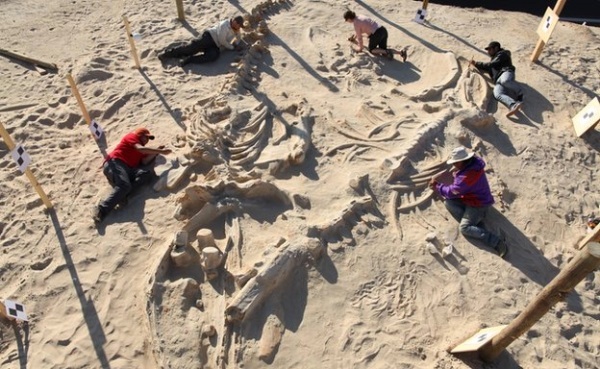3D Systems has long been a partner of the Smithsonian Institution. The two organizations have collaborated on a number of different projects to bring otherwise hidden historical treasures, too old and delicate for public display, out into the light by using 3D digital technologies such as 3D scanning and 3D printing.
Early last year 3DPI reported on the work of Nick Pyenson, an experienced paleobiologist and the Curator of Fossil Marine Mammals at the Smithsonian’s National Museum of Natural History.
Nick’s excavation of one of the largest fossil finds in Chile, which uncovered the skeletal remains of dozens of whales, has lead to the largest 3D printed joint-venture between 3D Systems and the Smithsonian to date. Indeed, the end of last week saw the first major 3D printed piece for the Smithsonian Institution installed and on display at the National Museum of Natural History along with a showcasing of different 3D printing and scanning technologies. The installation is a 3D printed replica a prehistoric whale fossil that is 20 feet in length, which, according to both parties, means that the prints are the largest existing of their kind. The whale fossils have been finished and mounted to replicate the way they were discovered in the desert.
This whale fossil is the just first of many planned 3D heritage projects that the Smithsonian will undertake during its multi-year partnership with 3DS.
But more insight into the entire process of replicating the whale can be found in the video below:




